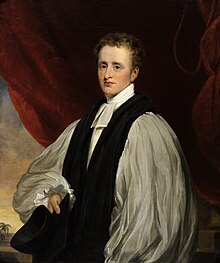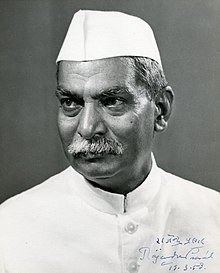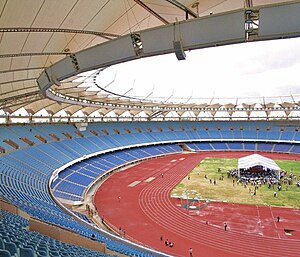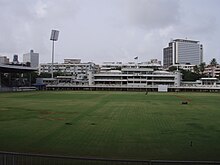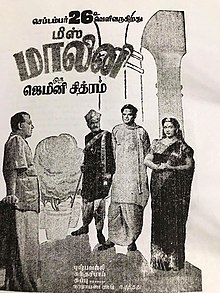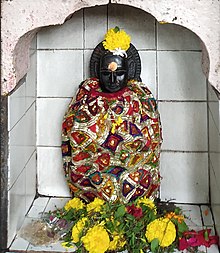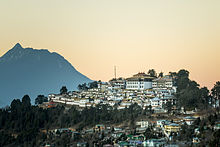Portal:India
Introduction


India, officially the Republic of India (ISO: Bhārat Gaṇarājya), is a country in South Asia. It is the seventh-largest country by area; the most populous country with effect from June 2023; and from the time of its independence in 1947, the world's most populous democracy. Bounded by the Indian Ocean on the south, the Arabian Sea on the southwest, and the Bay of Bengal on the southeast, it shares land borders with Pakistan to the west; China, Nepal, and Bhutan to the north; and Bangladesh and Myanmar to the east. In the Indian Ocean, India is in the vicinity of Sri Lanka and the Maldives; its Andaman and Nicobar Islands share a maritime border with Thailand, Myanmar, and Indonesia. (Full article...)
Selected pictures

Mysore Airport (IATA: MYQ, ICAO: VOMY), also known as Mandakalli Airport, is a domestic airport serving Mysore in Karnataka, India. It is located eight kilometres (5 mi) south of the city in the village of Mandakalli and is owned and operated by the Airports Authority of India. The Princely State of Mysore constructed it in 1940. The airport was later refurbished and inaugurated in May 2010. At present, it has direct flights to Chennai, Goa, and Hyderabad. (Full article...)
Independence Day is celebrated annually on 15 August as a public holiday in India commemorating the nation's independence from the United Kingdom on 15 August 1947, the day when the provisions of the Indian Independence Act, which transferred legislative sovereignty to the Indian Constituent Assembly, came into effect. India attained independence following the independence movement noted for largely non-violent resistance and civil disobedience led by Indian National Congress under the leadership of Mahatma Gandhi.
Independence coincided with the partition of India, in which British India was divided into the Dominions of India and Pakistan; the partition was accompanied by violent riots and mass casualties. On 15 August 1947, the first Prime Minister of India, Jawaharlal Nehru raised the Indian national flag above the Lahori Gate of the Red Fort in Delhi. On each subsequent Independence Day, the incumbent Prime Minister customarily raises the flag and gives an address to the nation. The entire event is broadcast by Doordarshan, India's national broadcaster, and usually begins with the shehnai music of Ustad Bismillah Khan. Independence Day is observed throughout India with flag-hoisting ceremonies, parades and cultural events. It is a national holiday in the country. (Full article...)
Ashwin began working on the biopic of Savitri following the release of his directorial debut Yevade Subramanyam (2015). Its principal photography began in May 2017 and ended in March 2018 with filming taking place in Hyderabad, Palakollu, Bangalore, Chennai, Mysore, and Delhi. Dani Sanchez-Lopez performed the cinematography while Kotagiri Venkateswara Rao edited the film. The film features the score and soundtrack composed by Mickey J. Meyer. Mahanati released theatrically on 9 May 2018 while its dubbed versions in Tamil released on 11 May 2018, with the title Nadigaiyar Thilagam (transl. The pride of actresses) and in Malayalam on the same day as Mahanadi (transl. The great actress) (Full article...)
East Bengal Ultras is known for making some of the largest unique tifos in Indian football. In the 2019–20 I-League season, it set a record for the biggest tifo—10,000 sq ft (930 m2)—in Indian football history at that time, breaking the previous record of 7,200 sq ft (670 m2) which the group had also set. (Full article...)
Miss Malini is a 1947 Indian Tamil-language satirical film written and directed by Kothamangalam Subbu and produced by K. Ramnoth, based on a story by R. K. Narayan. Subbu also starred in the film alongside Pushpavalli and M. S. Sundari Bai. Javar Seetharaman and Gemini Ganesan made their acting debuts in the film appearing in minor supporting roles. The film focuses on Malini (Pushpavalli), an impoverished woman who joins her actress friend Sundari's (M. S. Sundari Bai) theatre company Kala Mandhiram and becomes a success. Things take a turn for the worse when she befriends a charlatan named Sampath (Kothamangalam Subbu).
Miss Malini ridiculed aspects of life in Madras (now Chennai) during the World War II period, and was the only story written by Narayan for the screen that came to fruition. It was released on 26 September 1947, and was accompanied in theatres by Cinema Kadhambam, the first animated film produced in South Indian cinema. Miss Malini was praised by intellectuals; Subbu's performance as Sampath was widely appreciated. The songs composed by S. Rajeswara Rao and Parur S. Anantharaman became popular, and the film gained cult status in Tamil cinema. (Full article...)
Alchi Monastery (Tibetan: ཨ་ལྕི་ཆོས་འཁོར།) or Alchi Gompa (Tibetan: ཨ་ལྕི་དགོམ་པ།, also Alci) is a Tibetan Buddhist monastery, known more as a monastic complex (chos-'khor) of temples in Alchi village in the Leh District, under the Ladakh Autonomous Hill Development Council of the Ladakh Union Territory. The complex comprises four separate settlements in the Alchi village in the lower Ladakh region with monuments dated to different periods. Of these four hamlets, Alchi monastery is said to be the oldest and most famous. It is administered by the Likir Monastery. It is 60 west of Leh on Leh-Kargil Highway.
Alchi is also part of the three villages (all in lower Ladakh region) which constitute the ‘Alchi group of monuments’; the other two villages adjoining Alchi are the Mangyu and Sumda Chun. The monuments in these three villages are stated to be of "unique style and workmanship’, but the Alchi monastic complex is the best known. (Full article...)
Written by Samudrala Sr., Kannadasan, and Murugadasa, Tenali Ramakrishna narrates the story of the 14th century Telugu and Sanskrit poet and scholar of the same name, and his life as a member of the court of Krishnadevaraya, the king of the Vijayanagara Empire. Using his wits, Ramakrishna manages to save Krishnadevaraya from attacks by the Bahmani Sultanate, which tries to invade the Vijayanagara Empire. The rest of the film is about Ramakrishna's efforts to save Krishnadevaraya from courtesan Krishnasani, a spy, and convincing Emperor Babur against extending support to the Sultanate in the war. (Full article...)
Kubera (Sanskrit: कुबेर, IAST: Kubera) also known as Kuvera, Kuber and Kuberan, is the god of wealth, and the god-king of the semi-divine yakshas in Hinduism. He is regarded as the regent of the north (Dikpala), and a protector of the world (Lokapala). His many epithets extol him as the overlord of numerous semi-divine species, and the owner of the treasures of the world. Kubera is often depicted with a plump body, adorned with jewels, and carrying a money-pot and a club.
Originally described as the chief of evil spirits in Vedic-era texts, Kubera acquired the status of a deva (god) only in the Puranas and the Hindu epics. The scriptures describe that Kubera once ruled Lanka, but was overthrown by his half-brother Ravana, later settling in the city of Alaka in the Himalayas. Descriptions of the "glory" and "splendour" of Kubera's city are found in many scriptures. (Full article...)
Karnan, which was officially launched in 1963, was shot in palaces at Jaipur and the war sequences were filmed in Kurukshetra, which featured several soldiers from the Indian Army. The film's original soundtrack was composed by the duo Viswanathan–Ramamoorthy, while the lyrics were written by Kannadasan. The screenplay was written by A. S. Nagarajan and the dialogues by Sakthi T. K. Krishnasamy. The film was the first in Tamil to be colourised using Eastmancolor. (Full article...)
Kanhopatra (or Kanhupatra) was a 15th-century Marathi saint-poet, venerated by the Varkari sect of Hinduism.
Little is known about Kanhopatra. According to most traditional accounts, Kanhopatra was a courtesan and dancer.These accounts typically concentrate on her death when she chose to surrender to the Hindu god Vithoba—the patron god of the Varkaris—rather than becoming a concubine of the Badshah (king) of Bidar. She died in the central shrine of Vithoba in Pandharpur. She is the only person whose samadhi (mausoleum) is within the precincts of the temple. (Full article...)

The Alchon Huns, (Bactrian: αλχον(ν)ο Alkhon(n)o or αλχαν(ν)ο Alkhan(n)o) also known as the Alkhan, Alchono, Alxon, Alkhon, Alakhana, and Walxon, were a nomadic people who established states in Central Asia and South Asia during the 4th and 6th centuries CE. They were first mentioned as being located in Paropamisus, and later expanded south-east, into the Punjab and Central India, as far as Eran and Kausambi. The Alchon invasion of the Indian subcontinent eradicated the Kidarite Huns who had preceded them by about a century, and contributed to the fall of the Gupta Empire, in a sense bringing an end to Classical India.
The invasion of India by the Huna peoples follows invasions of the subcontinent in the preceding centuries by the Yavana (Indo-Greeks), the Saka (Indo-Scythians), the Pahlava (Indo-Parthians), and the Kushana (Yuezhi). The Alchon Empire was the second of four major Huna states established in Central and South Asia. The Alchon were preceded by the Kidarites and succeeded by the Hephthalites in Bactria and the Nezak Huns in the Hindu Kush. The names of the Alchon kings are known from their extensive coinage, Buddhist accounts, and a number of commemorative inscriptions throughout the Indian subcontinent. (Full article...)
Developed as a heritage village, DakshinaChitra has an array of displays and relocated originals of dwellings depicting the life pattern of people in the states of southern India. The exhibits portray the architecture, art, folk performing-arts and craft of South Indian traditions. The amenities include a research unit, crafts bazaar, playground, an area to hold religious functions, stone workshop, and souvenir kiosks. There are craftsmen who permanently work at DakshinaChitra who demonstrate or explain how they make their wares. Besides workshops are conducted regularly for various crafts by artists who rent the community studio. (Full article...)
Chandramukhi was produced by Prabhu and his brother Ramkumar Ganesan through their company Sivaji Productions, and is the company's 50th film. The soundtrack album and background score were composed by Vidyasagar. Cinematography was handled by Sekhar V. Joseph and editing was done by Suresh Urs. Principal photography began on 24 October 2004 and was completed in March 2005. (Full article...)
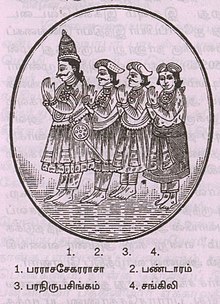
The Arya Chakravarti dynasty (Tamil: ஆரியச் சக்கரவர்த்திகள் வம்சம், Sinhalese: ආර්ය චක්රවර්තී රාජවංශය) were kings of the Jaffna Kingdom in Sri Lanka. The earliest Sri Lankan sources, between 1277 and 1283, mention a military leader of this name as a minister in the services of the Pandyan Empire; he raided the western Sri Lankan coast and took the politically significant relic of the Buddha's tooth from the Sinhalese capital city of Yapahuwa. Political and military leaders of the same family name left a number of inscriptions in the modern-day Tamil Nadu state, with dates ranging from 1272 to 1305, during the late Pandyan Empire. According to contemporary native literature, such as Cekaracecekaramalai, the family also claimed lineage from the Tamil Brahmins of the prominent Hindu pilgrimage temple of Rameswaram in the modern Ramanathapuram District of India. They ruled the Jaffna kingdom from the 13th until the 17th century, when the last of the dynasty, Cankili II, was ousted by the Portuguese. (Full article...)
Mudumalai National Park is a national park in the Nilgiri Mountains in Tamil Nadu in southern India. It covers 321 km2 (124 sq mi) at an elevation range of 850–1,250 m (2,790–4,100 ft) in the Nilgiri District and shares boundaries with the states of Karnataka and Kerala. A part of this area has been protected since 1940. The national park has been part of Nilgiri Biosphere Reserve since 1986 and was declared a tiger reserve together with a buffer zone of 367.59 km2 (141.93 sq mi) in 2007.
It receives an annual rainfall of about 1,420 mm (56 in) and harbours tropical and subtropical moist broadleaf forests with 498 plant species, at least 266 bird species, 18 carnivore and 10 herbivore species. It is drained by the Moyar River and several tributaries, which harbour 38 fish species.
Traffic on three public roads passing through the national park has caused significant roadkills of mammals, reptiles and amphibians. The park's northern part has been affected by several wildfires since 1999. (Full article...)
Karl Marx in Kalbadevi was successful and has had hundreds of performances, but received mixed reviews from theatre critics. It was praised for Puranik's performance and for presenting complex ideas simply but criticised for its script. (Full article...)
The film is partially inspired by the 1991 Telugu film Seetharamayya Gari Manavaralu directed by Kranthi Kumar. Govindudu Andarivadele portrays a "non-resident Indian" named Abhiram who visits his grandfather Balaraju's house as a student of agriculture. He actually came to reconcile the differences between his father, Chandrasekhar Rao, and Balaraju. The pair parted ways as Chadrasekhar went to the UK while Balaraju stayed and built a charitable hospital for local people. Abhiram succeeds in winning over family members, and Balaraju understands the truth behind Abhiram and his attempts. (Full article...)
Parmotrema perlatum, commonly known as the powdered ruffle lichen, is a common species of foliose lichen in the family Parmeliaceae. The species has a cosmopolitan distribution and occurs throughout the Northern and Southern Hemispheres. Parmotrema perlatum is a prominent and widely recognised species within its genus across primarily temperate zones, preferring humid, oceanic-suboceanic habitats. It is found in diverse geographic areas including Africa, North and South America, Asia, Australasia, Europe, and islands in the Atlantic and Pacific oceans. It usually grows on bark, but occasionally occurs on siliceous rocks, often among mosses.
The thallus of Parmotrema perlatum is large, light-grey to pale-blue patch-shaped with rounded and ruffled lobes and often with black hair-cilia at the edges. Distinguishing features of the lichen include its conspicuous soralia (reproductive structures) near the lobe edges, curled leaf-like lobes, and a narrow, shiny, and sometimes wrinkly area on the underside near the margin. This species is known for producing certain secondary metabolites, namely atranorin and a group of substances known as the stictic acid complex, which includes stictic and constictic acids, among other related compounds. These morphological and chemical characteristics help distinguish P. perlatum from several other potential lookalikes. (Full article...)
Tawang Monastery is a Buddhist monastery located in Tawang, Arunachal Pradesh, India. It is the largest monastery in the country. It is situated in the valley of the Tawang Chu, in close proximity to the Chinese and Bhutanese border.
Tawang Monastery is known in Tibetan as Gaden Namgyal Lhatse, which translates to "the divine paradise of complete victory". It was founded by Merak Lama Lodre Gyatso in 1680–1681 in accordance with the wishes of the 5th Dalai Lama, Ngawang Lobsang Gyatso. It belongs to the Gelug school of Vajrayana Buddhism and had a religious association with Drepung Monastery of Lhasa, which continued during the period of British rule. (Full article...)
The Battle of Elephant Point was an airborne operation at the mouth of the Rangoon River conducted by a composite Gurkha airborne battalion that took place on 1 May 1945. In March 1945, plans were made for an assault on Rangoon, the capital of Burma, as a stepping-stone on the way to recapturing Malaya and Singapore. Initial plans for the assault on the city had called for a purely land-based approach by British Fourteenth Army, but concerns about heavy Japanese resistance led to this being modified with the addition of a joint amphibious-airborne assault. This assault, led by 26th Indian Division, would sail up the Rangoon River, but before it could do so, the river would have to be cleared of Japanese and British mines. In order to achieve this, coastal defences along the river would have to be neutralized, including a battery at Elephant Point.
This task was given to 44th Indian Airborne Division, but the division was in the middle of a reorganization, and as such a composite battalion was formed from two Gurkha parachute battalions. The battalion assembled and then trained throughout April, and then early in the morning of 1 May was dropped near Elephant Point. As it advanced towards the battery one of the battalion's companies was attacked by American bombers, causing a number of casualties. Despite this, and torrential rain, the battalion successfully assaulted Elephant Point and neutralized the battery there after a fierce firefight. It remained around Elephant Point until 2 May, when 26th Indian Division conducted its amphibious assault and secured Rangoon. (Full article...)
Rudraveena focuses on the ideological conflicts between 'Bilahari' Ganapathi Sastry, a reputed carnatic musician and his younger son Suryanarayana "Suryam" Sastry. Sastry's discrimination towards the people belonging to lower castes is criticised by his son, Suryam, who believes in society's welfare and walks out for good later. The events that led to the change in Sastry's views form the remaining part of the story. Ganesh Patro wrote the film's dialogue and worked on the script with Balachander for two months, though it was tweaked many times during the shoot. Ilaiyaraaja composed the soundtrack and background score. R. Raghunadha Reddy was the director of photography. Ganesh Kumar edited the film and Mohanam was the art director. (Full article...)
News
- 2 September 2024 –
- At least five people are shot, with two critically injured, at the West Indian Day Parade in Brooklyn, New York, United States. (AP)
- 27 August 2024 – 2024 Kolkata rape and murder incident
- West Bengal Police fire tear gas and water cannons at protesting university students and medical professionals demanding the resignation of West Bengal Chief Minister Mamata Banerjee for her handling in the rape and murder case of a medic in Kolkata, West Bengal, India. (Al Jazeera)
- 23 August 2024 – 2024 India–Bangladesh floods
- At least 23 people are killed and more than 4.5 million people are affected by floods caused by heavy rains in eastern Bangladesh. (Al Jazeera)
- 23 August 2024 –
- Twenty-seven people are killed and 16 more injured when a bus carrying Indian pilgrims on the Prithvi Highway in Nepal crashes. (AP)
- A tourist from India falls eight-meters deep into a sinkhole after a section of a sidewalk along Jalan Masjid India in Kuala Lumpur caved in, prompting search and rescue operations. (The Star) (The Straits Times)
Did you know...
- ... that the Indian politician Diwan Chaman Lall failed to get rid of the painting Nude of Indira?
- ... that Josephine Gates Kelly of the Standing Rock Reservation once hitchhiked to Washington, D.C., to protest portions of the Indian Reorganization Act?
- ... that before becoming a commissioner of Indian affairs, William P. Dole was only known to have encountered Native Americans once in his life?
- ... that St Mary's Anglican Church, Busselton, Australia, has been a part of six dioceses, namely Canterbury, Calcutta, Sydney, Adelaide, Perth and Bunbury?
- ... that in 2022 Sandhya Dhar has received both a Nari Shakti Puraskar and a bronze medal in boccia at the Indian national championships?
- ... that Fakhruddin Ali Ahmed, India's second Muslim president, was also the second Indian president to die in office?
Topics related to India
Timeline of Indian history, Indus Valley Civilisation, Dholavira, Science and technology in ancient India, Meluhha, Aryan invasion theory, Out of India theory, Greek conquests in India, Indian maritime history, Maurya Empire, Ashoka, Shunga Empire, Hoysala Empire, Vijayanagara, Satavahana dynasty, Indo-Greek Kingdom, Indo-Scythians, Indo-Parthian Kingdom, Kushan Empire, Western Satraps, Gupta Empire, Chola dynasty, Pala Empire, Islamic incursions in India, Mughal Empire, Maratha Empire, British Raj, East India Company, Governor-General, Viceroy, War of Independence, 1857, Indian independence movement, Indian National Army, Azad Hind, Quit India Movement, Partition of India, History of Republic of India, Non-Aligned Movement, Sino-Indian War, Indo-Pakistani War of 1947–1948, Indo-Pakistani War of 1965, Indo-Pakistani War of 1971, Kargil War, 2001–02 India–Pakistan standoff, Military, Demographic
Law, Hindu law, Constitution, Political parties (Indian National Congress, Bharatiya Janata Party), Foreign relations, Elections, Political divisions, Reservation in India
Government agencies, Legislative branch (Lok Sabha, Rajya Sabha) Executive branch (President & Vice President, Prime Minister & Deputy Prime Minister, Cabinet Ministers, Cabinet Secretary, Election Commission, Foreign Minister; Law enforcement: CBI, CID, Intelligence: IB, RAW), Directorate General of Income Tax Investigation Judicial branch (Supreme Court), Armed Forces (Army, Navy, Air Force, Border Security Force, Coast Guard)
Himalayas, Western Ghats, Eastern Ghats, Indo-Gangetic Plain, Deccan Plateau, Thar Desert, Ganges, Rann of Kutch, Brahmaputra River, Northeast India; Mountains, Valleys, Islands, Rivers; States and union territories, Cities, Districts, Regions, Fauna, Flora
Rupee, Bombay Stock Exchange, National Stock Exchange, Standard of living, Companies, Reserve Bank of India, Energy policy (Solar, Wind, Nuclear), Tourism, Transport (Expressways, Rail transport, Auto rickshaw),
Languages, Standard of living, Religion
Music (Carnatic, Hindustani, Indi-pop), Dance, Languages, Literature, Architecture, Film & TV, Cuisine, Holidays, Folklore, Education, Media, Indian martial arts
Indian Council of Agricultural Research (ICAR), Indian Institute of Astrophysics, National Centre for Software Technology, AIIMS, IISc, IIT, NIT, BITS-Pilani, INRegistry, Indian numbering system, Indian Space Research Organisation, National Internet Exchange of India, ICRISAT, International Institute of Information Technology, Hyderabad
Indian English, Indian nationality law, Numbering system, Indian Space Research Organisation, Telecommunications, National Highways Development Project, Flag, Vehicle registration plates, Indian nationalism, Metrication in India
Categories
Related portals
Religions in India
Indian Subcontinent
Other countries
Wikipedias in Indian languages
- অসমীয়া (Assamese)
- বাংলা (Bengali)
- भोजपुरी (Bhojpuri)
- বিষ্ণুপ্রিয়া মণিপুরী (Bishnupriya Manipuri)
- गोंयची कोंकणी / Gõychi Konknni (Konkani)
- ગુજરાતી (Gujarati)
- हिन्दी (Hindi)
- ಕನ್ನಡ (Kannada)
- कॉशुर/كشميري (Kashmiri)
- मैथिली (Maithili)
- മലയാളം (Malayalam)
- मराठी (Marathi)
- नेपाली (Nepali)
- नेपाल भाषा
- (Newari)
- ଓଡ଼ିଆ (Odiya)
- ਪੰਜਾਬੀ (Punjabi)
- पालि (Pali)
- संस्कृत (Sanskrit)
- ᱥᱟᱱᱛᱟᱲᱤ (Santali)
- سنڌي (Sindhi)
- தமிழ் (Tamil)
- తెలుగు (Telugu)
- ತುಳು (Tulu)
- اردو (Urdu)
Associated Wikimedia
The following Wikimedia Foundation sister projects provide more on this subject:
-
Commons
Free media repository -
Wikibooks
Free textbooks and manuals -
Wikidata
Free knowledge base -
Wikinews
Free-content news -
Wikiquote
Collection of quotations -
Wikisource
Free-content library -
Wikiversity
Free learning tools -
Wikivoyage
Free travel guide -
Wiktionary
Dictionary and thesaurus


![Image 1 Darjeeling (/dɑːrˈdʒiːlɪŋ/, Bengali: [ˈdarˌdʒiliŋ], Nepali: [ˈdard͡ziliŋ]) is a city in the northernmost region of the Indian state of West Bengal. Located in the Eastern Himalayas, it has an average elevation of 2,045 metres (6,709 ft). To the west of Darjeeling lies the easternmost province of Nepal, to the east the Kingdom of Bhutan, to the north the Indian state of Sikkim, and farther north the Tibet Autonomous Region region of China. Bangladesh lies to the south and southeast, and most of the state of West Bengal lies to the south and southwest, connected to the Darjeeling region by a narrow tract. Kangchenjunga, the world's third-highest mountain, rises to the north and is prominently visible on clear days. In the early 19th century, during East India Company rule in India, Darjeeling was identified as a potential summer retreat for British officials, soldiers and their families. The narrow mountain ridge was leased from the Kingdom of Sikkim, and eventually annexed to British India. Experimentation with growing tea on the slopes below Darjeeling was highly successful. Thousands of labourers were recruited chiefly from Nepal to clear the forests, build European-style cottages and work in the tea plantations. The widespread deforestation displaced the indigenous peoples. Residential schools were established in and around Darjeeling for the education of children of the domiciled British in India. By the late-19th century, a novel narrow-gauge mountain railway, the Darjeeling Himalayan Railway, was bringing summer residents into the town and carrying a freight of tea out for export to the world. After India's independence in 1947, as the British left Darjeeling, its cottages were purchased by wealthy Indians from the plains and its tea plantations by out-of-town Indian business owners and conglomerates. (Full article...)](http://upload.wikimedia.org/wikipedia/en/d/d2/Blank.png)











